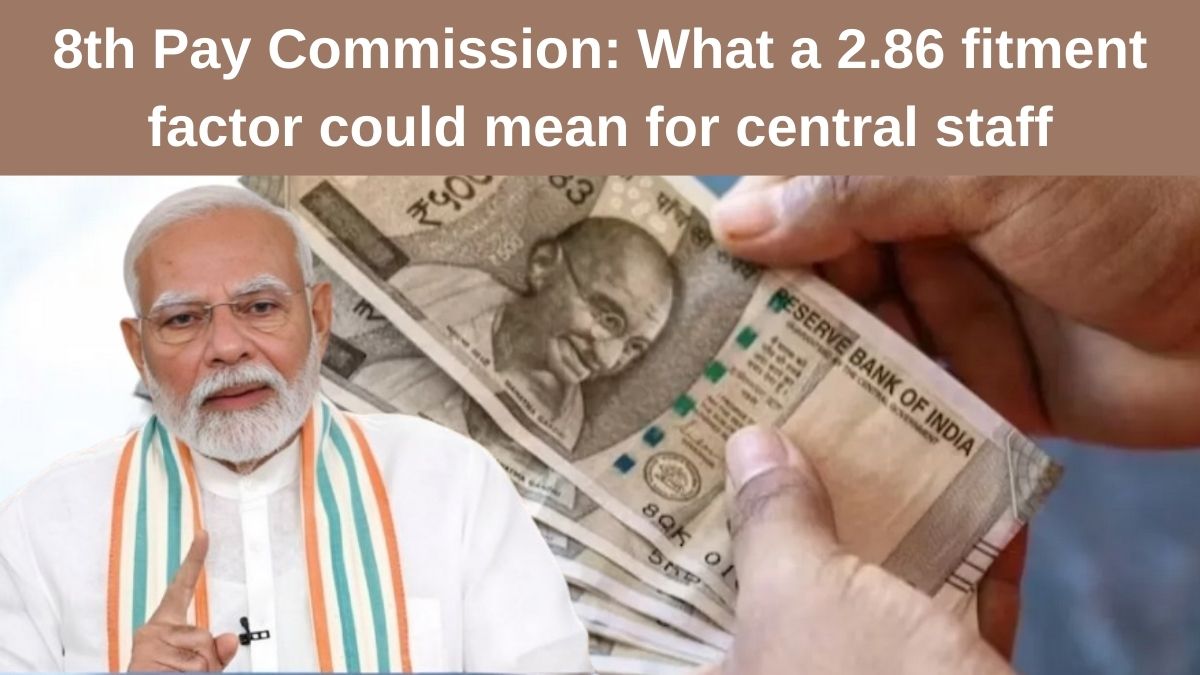The Indian government has taken its first official step toward establishing the 8th Central Pay Commission (8th CPC). This move comes well ahead of the expiration of the existing pay structure in December 2025, signaling the administration’s intent to streamline salary revisions for central government employees and pensioners.
Currently, the government is in the process of filling 42 crucial positions—ranging from consultants to the commission chairman—indicating that the groundwork for the new commission is nearly complete. Once the Terms of Reference (ToR) are finalized, the commission is expected to begin its formal duties by next month.
What is the Fitment Factor and Why Does It Matter?
The fitment factor is a multiplier used to calculate the new basic pay for government employees during the implementation of a new pay commission. It acts as a uniform benchmark to revise salaries across the board, making the transition from one pay matrix to another more structured and equitable.
Fitment Factor Formula:
New Basic Pay = Old Basic Pay × Fitment Factor
In the 7th Pay Commission, the fitment factor was set at 2.57. For instance, an employee with a basic salary of ₹10,000 under the 6th CPC saw it increase to ₹25,700 (₹10,000 × 2.57) under the 7th CPC.
The upcoming 8th CPC, however, may propose a fitment factor as high as 2.86, and in some cases, unions have demanded a factor of up to 3.68—a significant shift with major implications.
How a 2.86 Fitment Factor Would Transform Salaries
If the government finalizes a fitment factor of 2.86, it would lead to a sizable increase in take-home pay for millions of employees. To illustrate, let’s consider a few scenarios:
A current basic salary of ₹20,000 would rise to ₹57,200 (₹20,000 × 2.86).
A basic salary of ₹30,000 would jump to ₹85,800.
This could bring meaningful financial relief, especially in the context of inflation and rising living costs. The larger the fitment factor, the more substantial the salary jump.
Estimated Salary Structure: 7th vs. 8th CPC Comparison
Below is a comparative table showcasing how basic salaries might change with different fitment factors:
Old Basic Pay (6th CPC) | 7th CPC (2.57) | 8th CPC Estimate (2.86) | Demanded (3.68) |
|---|---|---|---|
₹10,000 | ₹25,700 | ₹28,600 | ₹36,800 |
₹15,000 | ₹38,550 | ₹42,900 | ₹55,200 |
₹20,000 | ₹51,400 | ₹57,200 | ₹73,600 |
₹25,000 | ₹64,250 | ₹71,500 | ₹92,000 |
₹30,000 | ₹77,100 | ₹85,800 | ₹1,10,400 |
₹35,000 | ₹89,950 | ₹1,00,100 | ₹1,28,800 |
₹40,000 | ₹1,02,800 | ₹1,14,400 | ₹1,47,200 |
Why the Fitment Factor Debate Matters to Millions
Government employees, from entry-level clerks to senior officers, are closely watching these developments. The fitment factor directly influences pensions, allowances, and overall financial planning for both active staff and retirees. While the 7th CPC helped align salaries more closely with modern-day costs, critics argue it still fell short in matching inflation.
A 2.86 multiplier could address these concerns, improving morale and reducing the burden of household expenses for millions of families.
When Will the 8th Pay Commission Be Implemented?
Although the commission’s formation is in progress, there is no official confirmation on its implementation timeline. However, the urgency shown by the government in initiating the appointment process suggests that it wants to stay ahead of the 2025 deadline.
Expectations are that the commission will present its recommendations by mid-2025, giving enough time for the necessary legislative and financial approvals.
What Are Employee Associations Demanding?
Many unions and employee federations are advocating for a higher fitment factor of 3.68, citing rising inflation, housing costs, and education expenses. They argue that the last pay commission did not adequately account for these realities, especially at lower pay grades.
In contrast, some financial analysts believe the government may opt for a more balanced figure between 2.57 and 2.86 to manage fiscal responsibility.
What to Expect Moving Forward
As government employees await clarity, discussions continue behind closed doors about salary structures, DA (Dearness Allowance) integration, and the inclusion of performance-based benefits. While there is growing optimism, much depends on how the economy performs and what fiscal space the government has for such a wide-scale revision.
FAQs
What is the likely implementation year of the 8th Pay Commission?
The commission is expected to begin its work in 2024, with the new pay structure likely rolling out by 2026.
Will pensioners also benefit from the 8th Pay Commission?
Yes, pensioners will see a proportional increase based on the fitment factor and revised pay scales.
Is the 2.86 fitment factor confirmed?
No, it is currently under discussion. It is one of the proposals being considered.
What does Terms of Reference (ToR) mean in this context?
ToR outlines the scope, responsibilities, and operational framework of the Pay Commission.
Why is there a demand for a 3.68 fitment factor?
Employee associations believe that a 3.68 factor is necessary to address the real cost of living and economic pressures.
Click here to know more.
